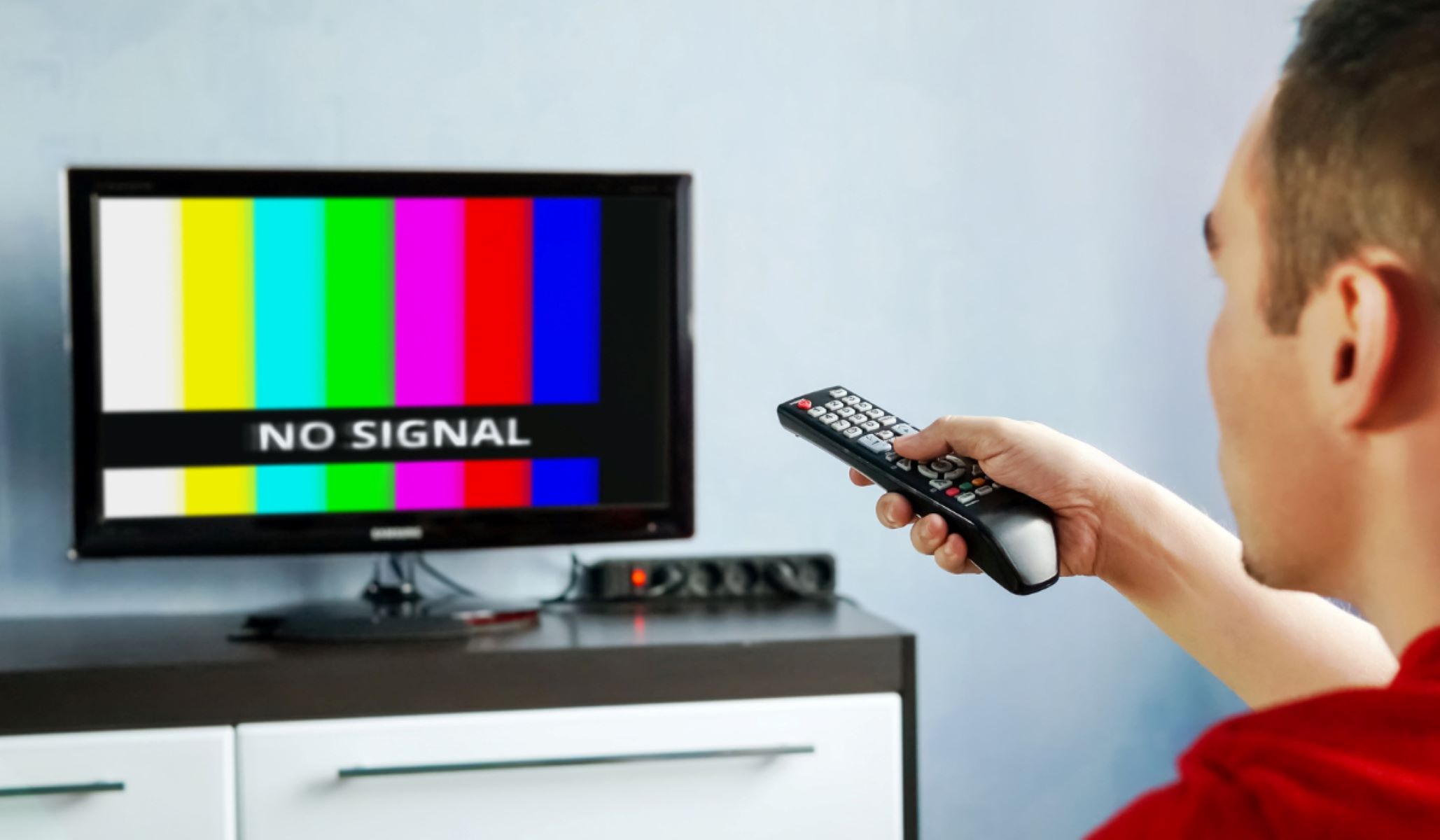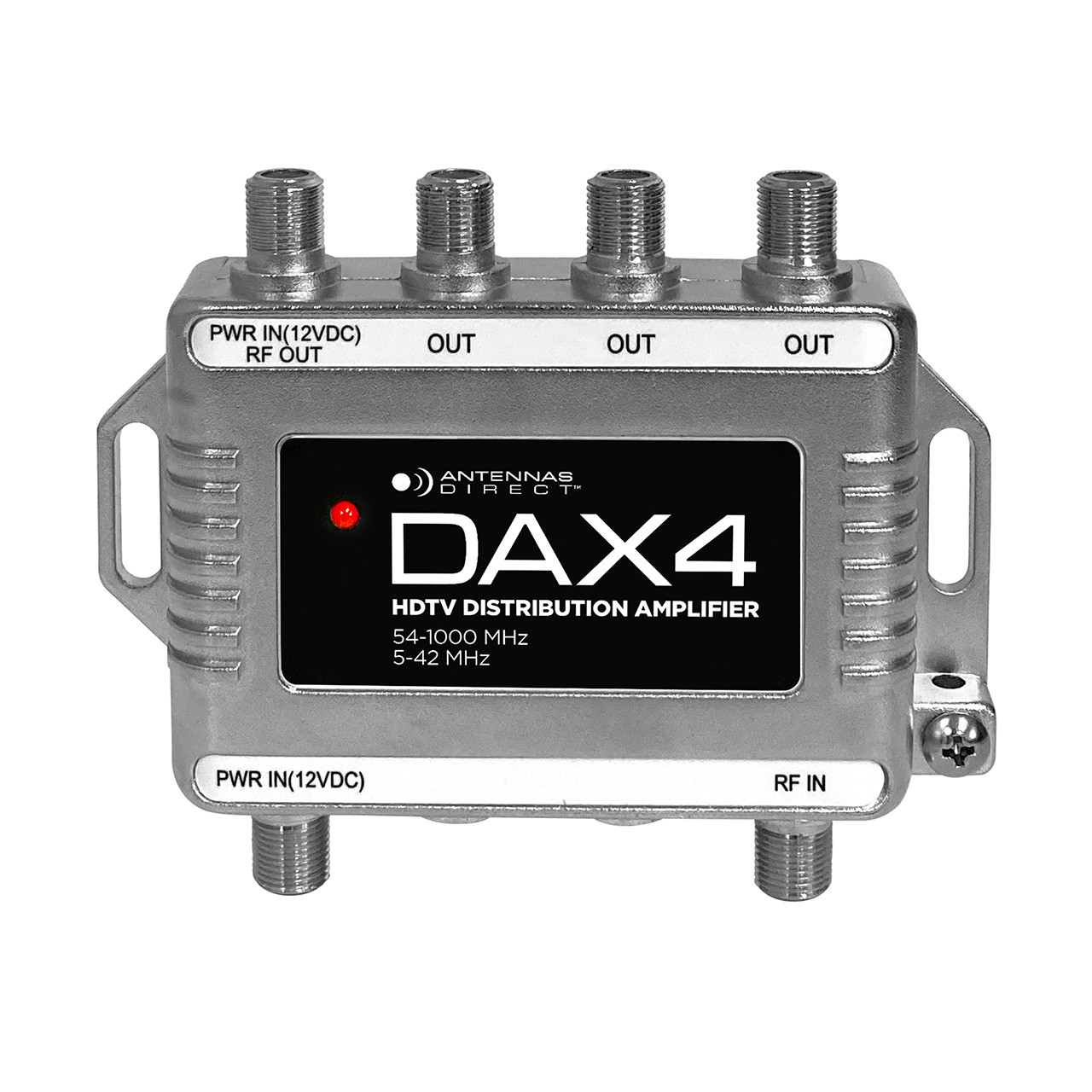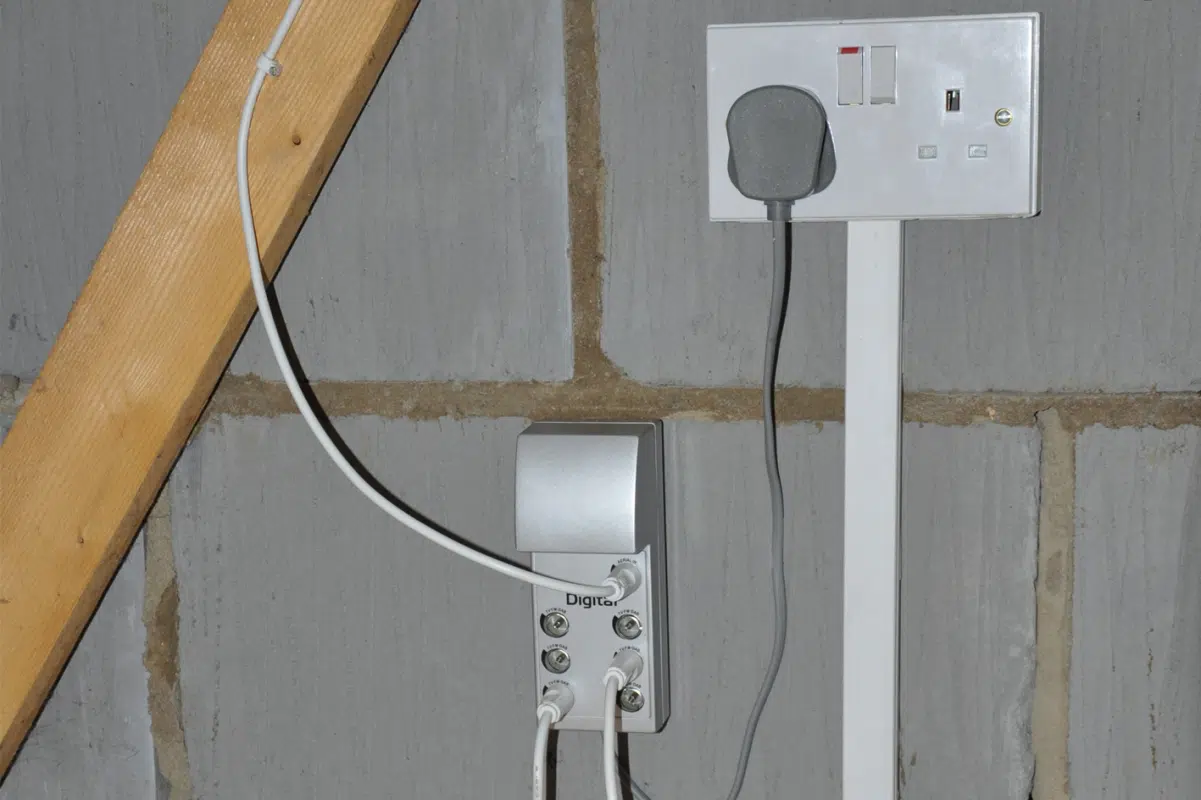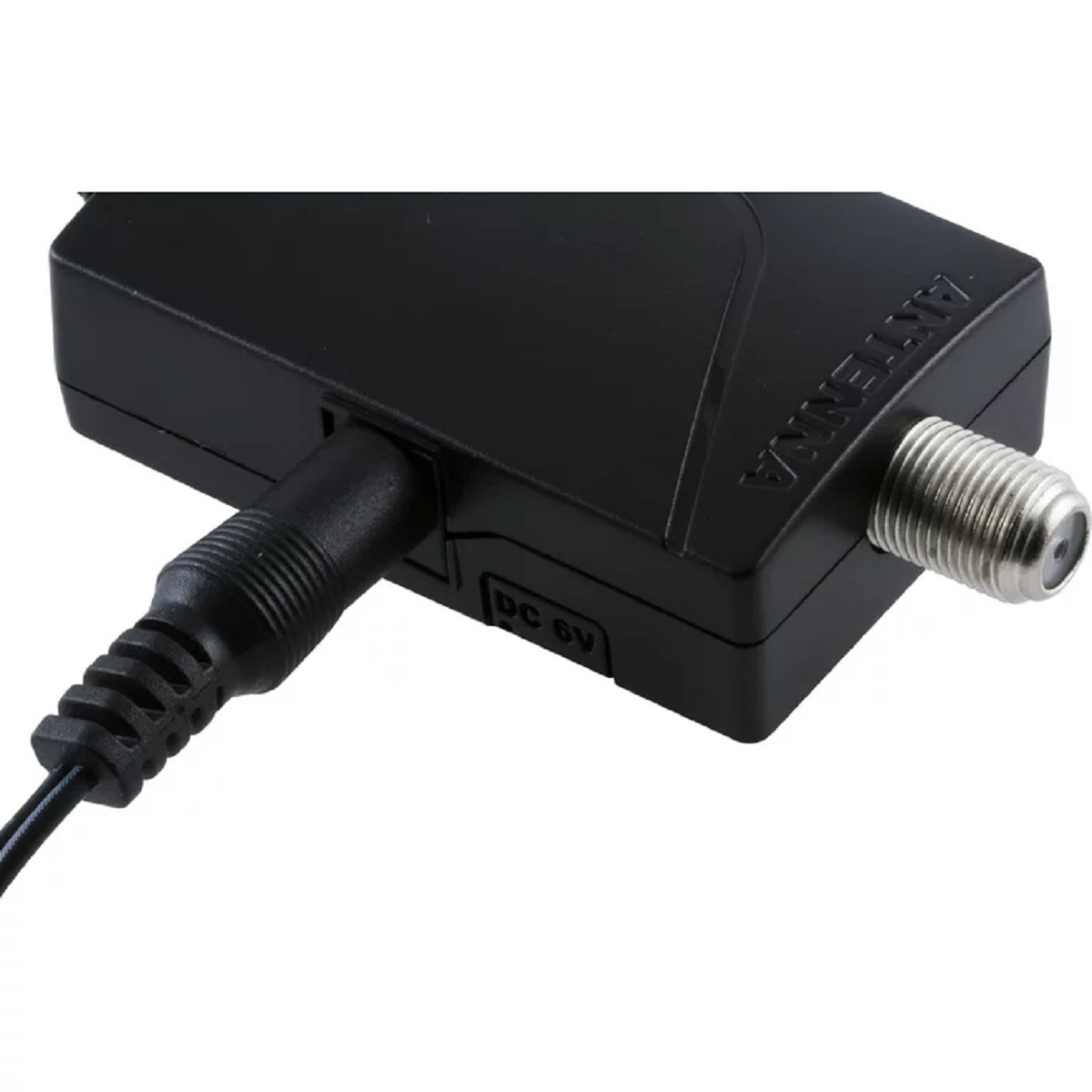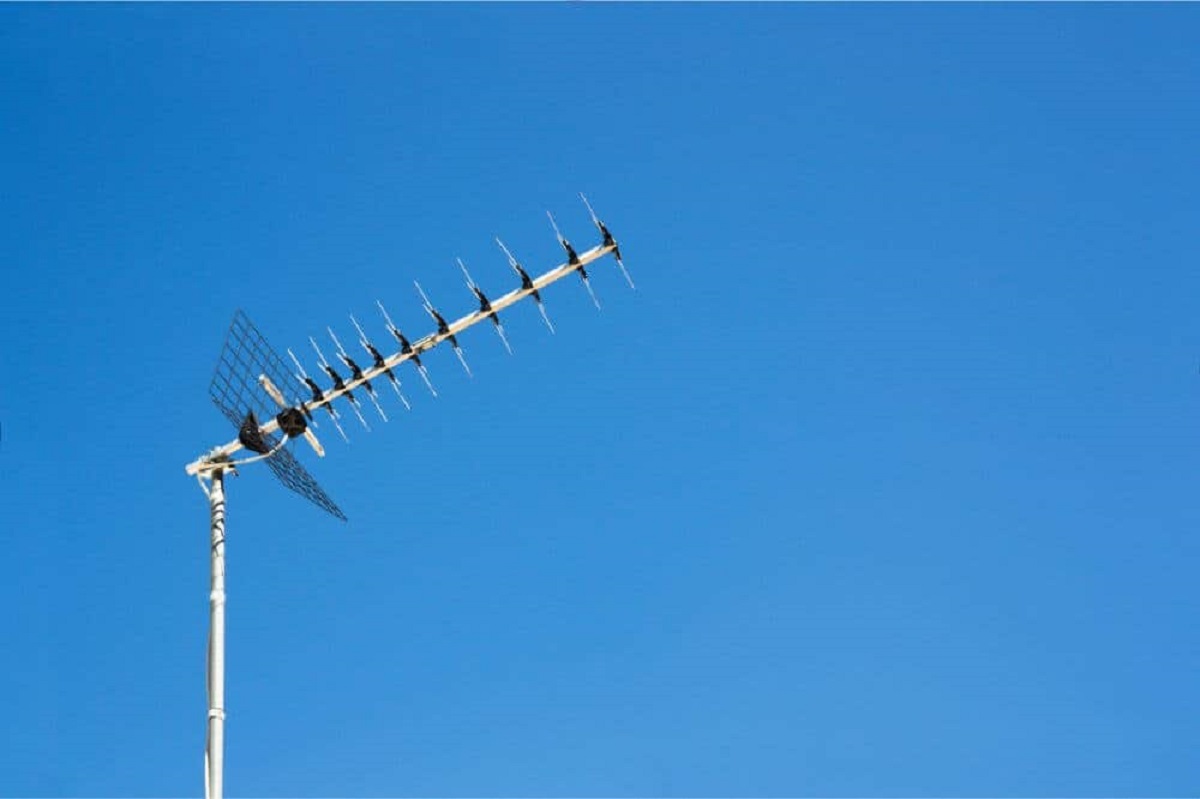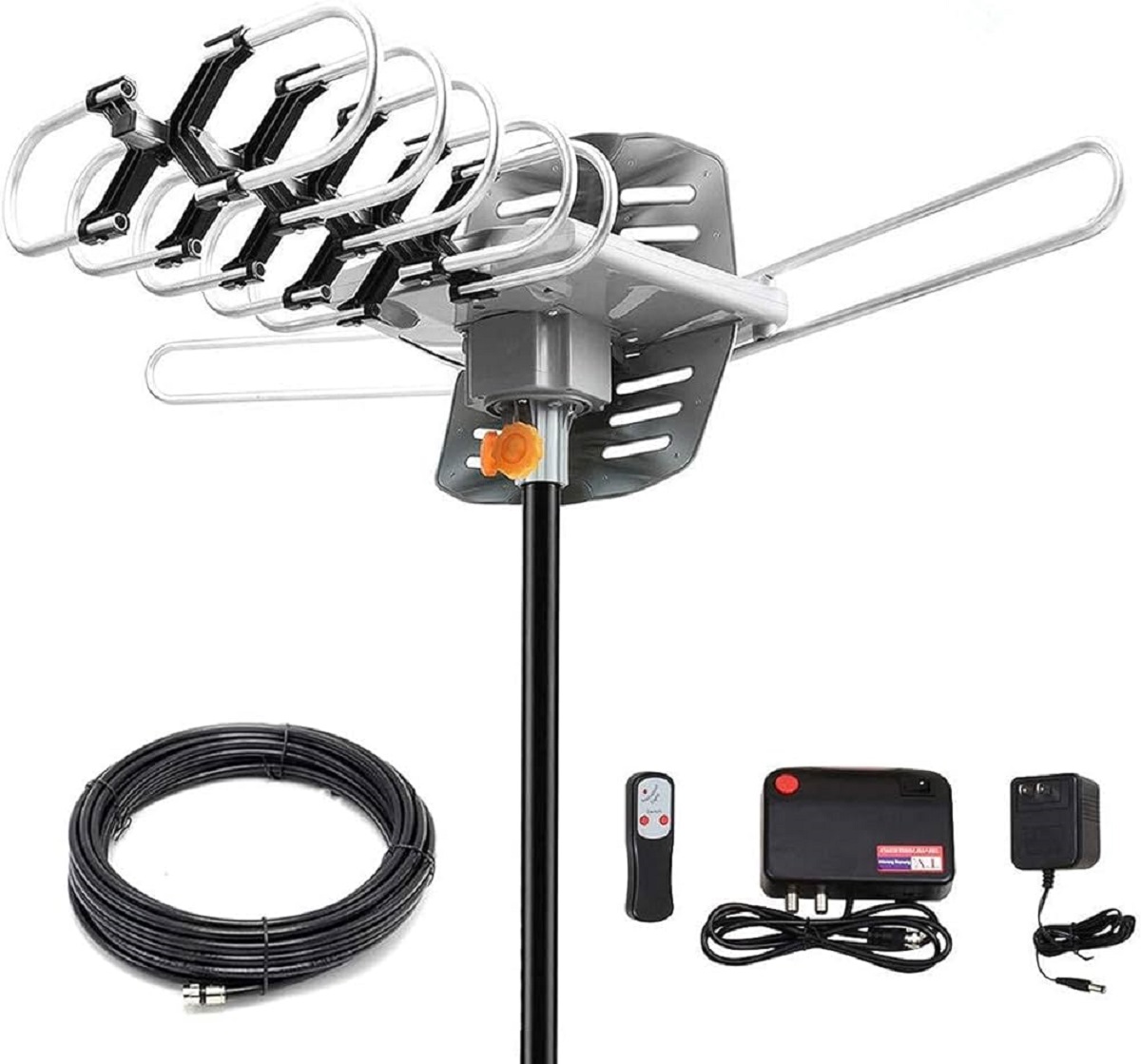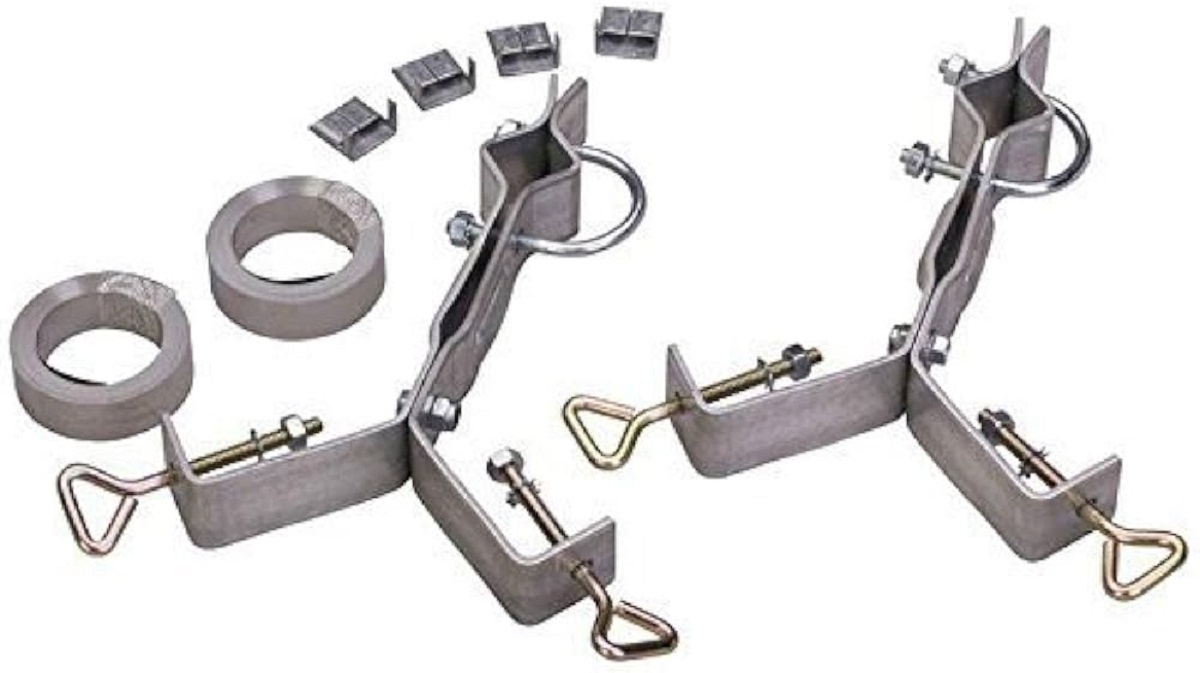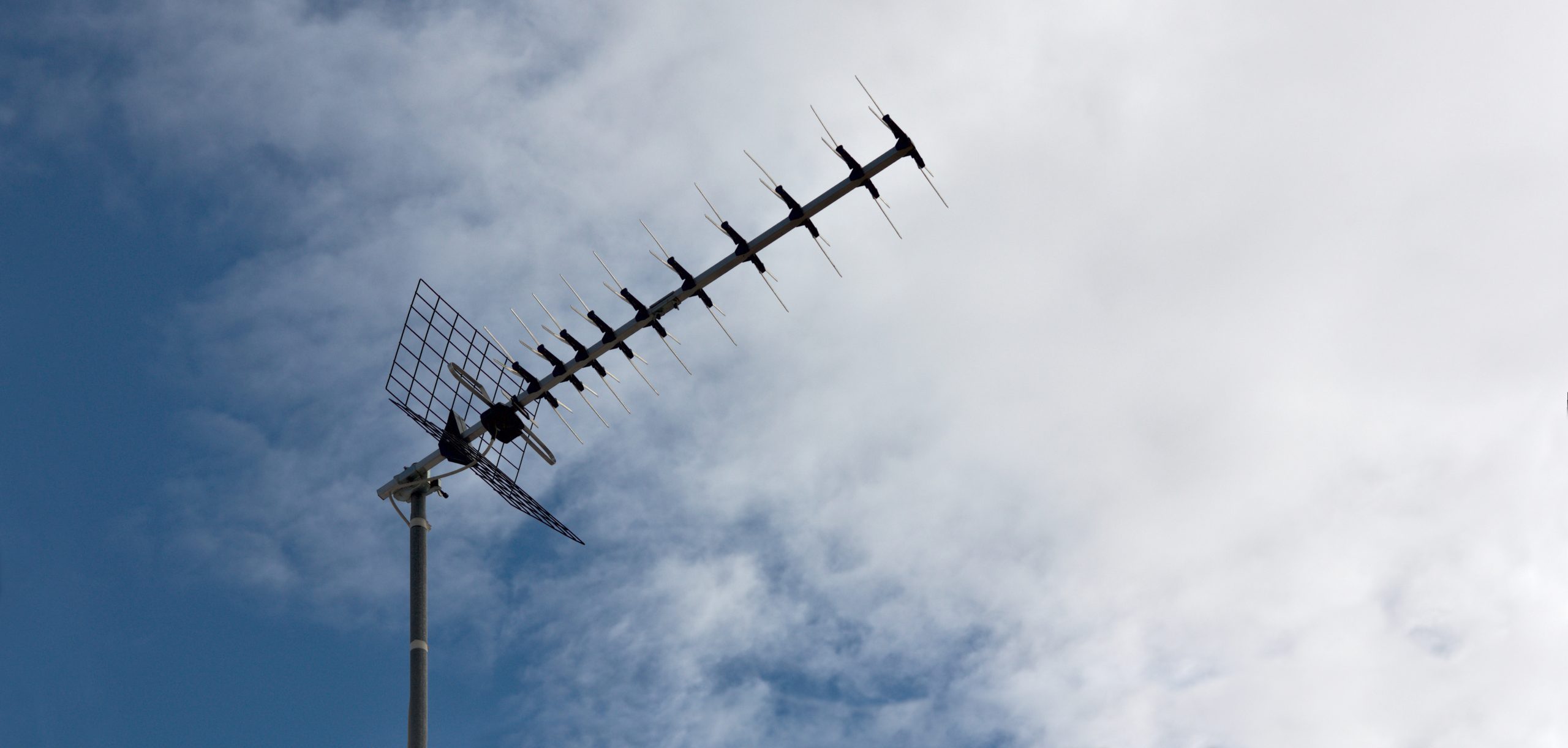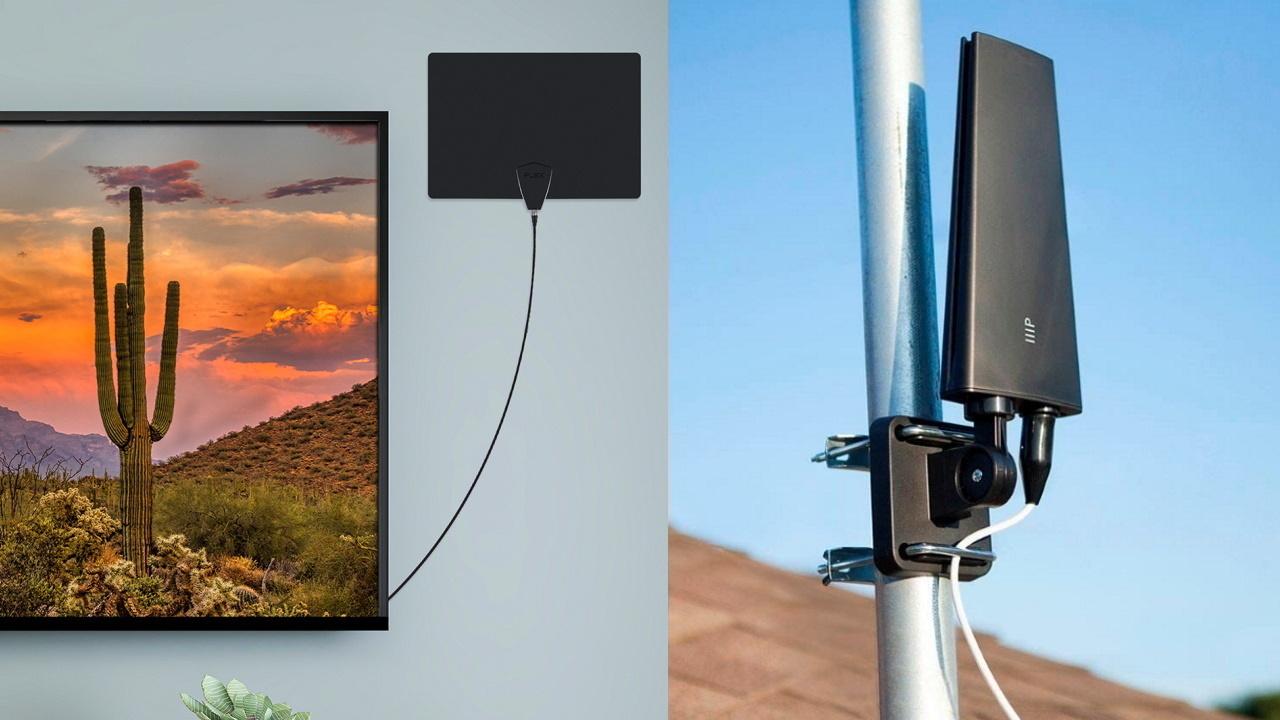Introduction
TV antennas are a popular choice for people who want to access over-the-air television broadcasts without the need for a cable or satellite subscription. Unfortunately, even with a high-quality antenna, it’s not uncommon to experience a loss of signal. Understanding the possible causes of this interference can help you troubleshoot and resolve the issue.
There are several factors that can contribute to a TV antenna losing its signal. Interference from nearby buildings or trees, the distance from the broadcasting tower, the type and quality of the antenna, and even weather conditions can all play a role in signal degradation. Additionally, having a damaged or rusty antenna, faulty cable connections, or electrical interference can also affect the signal’s strength and clarity.
In this article, we will explore each of these potential causes in more detail, providing you with the knowledge you need to identify and remedy any issues you may encounter with your TV antenna. By understanding these factors, you can take the necessary steps to improve your antenna’s performance and enjoy uninterrupted television viewing.
Interference from Nearby Buildings or Trees
One common cause of TV antenna signal loss is interference from nearby buildings or trees. When your antenna is obstructed by structures or foliage, it can weaken the signal and result in poor reception.
When tall buildings or large trees are in the direct line of sight between your antenna and the broadcasting tower, they can block or reflect the TV signal, causing it to degrade and potentially disappear. This obstruction can be especially problematic if you live in a densely populated urban area or an area with many tall trees.
To address this issue, you may need to reposition your antenna to find the best line of sight to the broadcasting tower. Experiment with different antenna placements, such as higher on your roof or on a mast, to minimize obstruction from nearby structures and maximize signal reception.
In some cases, you may need to consider alternative solutions, such as installing a higher gain antenna or using a signal amplifier. These can help overcome the interference caused by neighboring buildings or trees and enhance your TV signal’s strength and quality.
It’s also worth noting that seasonal changes can impact the interference from trees. As trees bloom and gain leaves in spring, the obstruction to your TV antenna signal may increase. Consider pruning or trimming trees that are directly in the path of your antenna to mitigate this issue.
By carefully assessing and addressing the interference from nearby buildings or trees, you can improve the performance of your TV antenna and enjoy a more reliable and consistent signal.
Distance from the Broadcasting Tower
The distance between your TV antenna and the broadcasting tower is a crucial factor that can affect signal strength and quality. The farther you are from the tower, the weaker the signal will be, which can lead to reception issues.
When the distance between your antenna and the tower is significant, the signal may have to travel through more obstacles, such as buildings, trees, and hills. These obstacles can cause signal loss and interference along the way, resulting in a weaker and less stable signal.
If you live in a remote or rural area, you may be particularly impacted by this issue, as broadcasting towers are often located in more populated areas. In such cases, it may be necessary to install a more powerful antenna with a higher gain to compensate for the increased distance.
Additionally, situating your antenna as high as possible can help mitigate signal loss due to distance. Mounting it on a rooftop or using a mast can improve your line of sight with the broadcasting tower, allowing for a better and more reliable signal reception.
If you’re unsure of the direction or distance to the nearest broadcasting tower, various online tools and apps are available that can help you determine the optimal positioning for your antenna.
It’s important to note that even with the best antenna placement, there may still be limitations to the signal strength based on your distance from the broadcasting tower. In such cases, considering alternative options like satellite or cable services may be necessary to ensure consistent and reliable access to television channels.
By understanding the impact of distance on your TV antenna’s signal strength, you can make informed decisions about antenna placement and explore alternative solutions when needed.
Type and Quality of the Antenna
The type and quality of the antenna you choose can significantly impact the strength and reliability of your TV signal. Different antennas are designed for specific frequencies and signal types, so it’s essential to select the right antenna for your needs.
Firstly, there are two primary types of TV antennas: indoor and outdoor. Indoor antennas are suitable for locations near broadcasting towers, where the signal strength is relatively strong. On the other hand, outdoor antennas are recommended for areas with weaker signals or when there are significant obstacles between the antenna and the tower.
Moreover, the quality of the antenna itself plays a crucial role in signal reception. Higher-quality antennas generally have better components and design, which can lead to improved performance and signal strength. While they may be more expensive, investing in a quality antenna can provide a more reliable and consistent TV signal.
When choosing an antenna, it’s important to consider its ability to receive both VHF (Very High Frequency) and UHF (Ultra High Frequency) signals. VHF signals are used by some TV stations, while most others use UHF signals. Ensuring that your antenna supports both types will allow you to access a wider range of channels.
Additionally, consider the antenna’s gain, which determines how well it can amplify the received signal. Higher gain antennas can provide a stronger signal reception and overcome losses due to distance or obstacles. However, it’s crucial to strike a balance, as an excess gain can also amplify unwanted noise and cause interference.
Lastly, keep in mind that antenna technology evolves, and newer models may offer better performance than older ones. Stay informed about advancements in antenna technology and consider upgrading your antenna if you notice persistent signal issues.
By selecting the appropriate type and quality of the antenna and keeping up with technological advancements, you can maximize signal strength and ensure a more enjoyable TV viewing experience.
Orientation of the Antenna
The orientation of your TV antenna plays a crucial role in the quality and clarity of the received signal. Properly aligning the antenna towards the broadcasting tower can significantly improve signal strength and reduce interference.
When setting up your antenna, it’s important to understand the direction and location of the broadcasting tower. By knowing this information, you can align your antenna in the optimal direction for receiving the strongest signal. Online tools, such as signal-locating websites or apps, can help you identify the precise location of the tower in your area.
Typically, you want to point the front of your antenna towards the tower. If you’re using a directional antenna, adjusting the angle and position of the antenna will be necessary for maximum signal reception. In some cases, fine-tuning the orientation may require trial and error to find the best position. Consider experimenting with different angles and positions to achieve the best signal quality.
It’s worth noting that the optimal orientation might vary depending on your location and the broadcasting tower’s distance. In some instances, tilting the antenna slightly upwards or downwards might improve signal reception. This adjustment compensates for the angle at which the broadcasting signals reach your location.
Moreover, the presence of nearby obstructions, such as buildings or trees, can affect signal reception. Take these obstacles into account and adjust your antenna’s orientation accordingly to minimize the interference caused by them.
For individuals residing in areas with broadcasting towers in different directions, using a multi-directional antenna or installing a rotor system can allow you to adjust the antenna’s direction remotely. This flexibility enables you to receive signals from various towers without having to manually reposition the antenna each time.
Regularly checking and adjusting the orientation of your TV antenna can help ensure optimal signal reception, resulting in a clearer and more reliable television viewing experience.
Weather Conditions
Weather conditions can have a significant impact on the performance of your TV antenna and the quality of the received signal. Certain weather conditions can cause signal disruptions or even a complete loss of reception.
One weather factor that can affect your TV signal is heavy rain. Raindrops in the air can absorb or scatter the broadcasting signals, leading to a weaker and less stable signal. The intensity of the rain and its distance from your location can determine the degree of signal degradation. During a heavy downpour, it’s not uncommon to experience pixelation, signal dropouts, or temporary loss of reception.
In addition to rain, strong winds can also cause signal interference. High winds can cause the antenna to move or sway, leading to a misalignment with the broadcasting tower. This misalignment can result in a weaker signal or even a complete loss of reception until the wind subsides, and the antenna is repositioned correctly.
Extreme weather conditions like thunderstorms or hurricanes can further disrupt TV signals. Lightning strikes and electrical disturbances associated with these weather events can cause power surges, interfering with the antenna signal or damaging the equipment.
In some cases, temperature fluctuations can also impact the TV signal. Rapid changes in temperature can cause expansion and contraction of antenna components or cables, potentially leading to loose connections. These loose connections can result in signal degradation or complete loss of reception until the connections are tightened.
While you cannot control the weather, you can take steps to minimize the impact of adverse conditions on your TV antenna. Securely mount your antenna to withstand strong winds and ensure all cable connections are tight and waterproofed. If severe weather is expected, temporarily disconnecting the antenna from the television or using a surge protector can offer protection against power surges caused by lightning strikes.
Understanding the influence of weather conditions on your TV antenna can help you manage signal disruptions. By taking appropriate precautions and being aware of the impact of different weather factors, you can enjoy uninterrupted television viewing, even during adverse weather conditions.
Damaged or Rusty Antenna
A damaged or rusty TV antenna can significantly impact the quality of your TV signal. Over time, exposure to the elements can cause antennas to rust or suffer physical damage, leading to signal degradation or complete signal loss.
Rust is a common problem for outdoor antennas, especially those made of metal. Rust can weaken the antenna’s structure, causing it to become brittle and prone to breakage. Moreover, the presence of rust can interfere with the antenna’s ability to receive and transmit signals effectively.
Damaged antennas, such as those with bent or broken elements, can also disrupt the signal reception. Even minor physical damage can affect the antenna’s ability to capture and amplify the TV signals, resulting in a weak or distorted signal.
Regularly inspecting your antenna for any signs of damage or rust is essential. Look for any visible cracks, bends, or missing elements on the antenna. If you notice any of these issues, it may be time to replace your antenna with a new one.
Replacing a damaged or rusty antenna with a high-quality and corrosion-resistant model is recommended. Consider investing in an antenna made from materials like aluminum, which are less susceptible to rust and can withstand harsh outdoor conditions.
It’s worth noting that indoor antennas are less prone to rust or physical damage. However, they can still accumulate dust and debris, which can affect signal reception. Regular cleaning and maintenance of indoor antennas can significantly improve their performance.
Additionally, ensure that all antenna connections are secure and free of damage. Damaged or loose cable connections can also lead to signal loss or poor signal quality. Inspect the cable connectors and replace them if necessary.
By addressing any damage or rust on your TV antenna promptly and replacing it if needed, you can restore optimal signal reception and enjoy a clear and uninterrupted television viewing experience.
Faulty Cable Connections
Faulty cable connections can be a common cause of signal loss and interference for TV antennas. If the cables connecting your antenna to your television or other devices are damaged, loose, or improperly connected, it can result in a weakened or disrupted signal.
The first step in addressing cable connection issues is to visually inspect the cables for any visible signs of damage, such as fraying or cuts. Damaged cables can disrupt the signal and reduce its strength. If you notice any damage, it’s important to replace the affected cables promptly.
Next, ensure that the cable connections are secure. Loose connections can lead to signal loss or poor signal quality. Check that the cables are firmly plugged into the antenna, television, or any other devices in the signal chain. It’s also recommended to give the connections a gentle wiggle to ensure they stay in place. Consider using cable ties or clips to manage and secure the cables, preventing accidental disconnections.
In addition to secure connections, it’s important to use the correct type and length of cables for your setup. Using low-quality or incompatible cables can result in signal degradation. For optimal performance, use high-quality coaxial cables designed for TV antenna installations. Additionally, ensure that the cable length is appropriate for your setup, as longer cables can introduce signal loss.
If you have multiple devices connected to the same antenna, such as televisions or a splitter, it’s crucial to check the connections between each device. Faulty connections in one device can impact the signal for all devices in the chain. Verify that each connection is tight and secure, ensuring a strong signal transmission to each device.
If you’ve recently rearranged your setup or introduced new devices, it’s possible that you’ve unintentionally disrupted cable connections. Double-check that all cables are properly connected and configured according to the manufacturer’s instructions.
Regularly inspecting and maintaining your cable connections can help prevent signal loss and ensure a reliable TV antenna signal. By addressing any faulty connections and using high-quality cables, you can enjoy a clear and uninterrupted viewing experience.
Electrical Interference
Electrical interference is a common issue that can disrupt the signal quality of your TV antenna. Various electrical devices and sources can interfere with the TV signal, leading to pixelation, signal dropouts, or complete signal loss.
One common source of electrical interference is nearby electronic devices. Devices such as microwaves, cordless phones, Wi-Fi routers, and even fluorescent lights can emit electromagnetic signals that interfere with the TV antenna’s signal. The proximity of these devices to the antenna can determine the degree of interference.
To minimize electrical interference, try to keep your TV antenna and associated cables away from these devices. Increasing the physical distance between the antenna and potential sources of interference can help reduce signal disruptions.
In some cases, using shielded cables for your antenna connections can also help mitigate electrical interference. Shielded cables are designed to minimize the impact of electromagnetic interference on the signal transmission. When selecting cables, look for those specifically labeled as “shielded” or “interference-resistant.”
Power lines and electrical wiring present another potential source of interference. When your antenna is in close proximity to these power sources, it can pick up electromagnetic interference, resulting in a degraded signal. Try to position your antenna as far away as possible from power lines or electrical cables to minimize this type of interference.
In rare cases, faulty electrical grounding can also contribute to signal interference. A grounding issue can cause unwanted electrical currents to interfere with the TV antenna signal. If you suspect a grounding problem, consult a professional to inspect and address the issue.
Using a signal amplifier or a TV antenna with built-in signal amplification can also help overcome electrical interference. These devices can boost the strength of the incoming signal, helping to compensate for any loss caused by interference.
Lastly, it’s worth noting that severe weather conditions, such as lightning storms, can cause electrical interference. Lightning strikes in the vicinity can induce electrical disturbances that impact the TV antenna’s performance. To protect your equipment from power surges caused by lightning, consider using surge protectors or disconnecting your antenna during such weather events.
By understanding the potential sources of electrical interference and taking appropriate measures to minimize their impact, you can ensure a clearer and more reliable TV antenna signal.
Conclusion
Experiencing a loss of signal with your TV antenna can be frustrating, but understanding the potential causes can help you troubleshoot and resolve the issue. Interference from nearby buildings or trees, the distance from the broadcasting tower, the type and quality of the antenna, the orientation of the antenna, weather conditions, damaged or rusty antennas, faulty cable connections, and electrical interference are all factors that can affect signal strength and quality.
By addressing these factors, you can improve the performance of your TV antenna and ensure a more reliable and enjoyable television viewing experience. Reorienting your antenna to minimize obstruction from nearby structures or trees, considering a more powerful antenna for longer distances, selecting the right type and high-quality antenna, aligning the antenna towards the broadcasting tower, taking weather conditions into account, replacing damaged or rusty antennas, ensuring secure and proper cable connections, and minimizing electrical interference can all contribute to a stronger and clearer TV signal.
It’s important to regularly inspect and maintain your TV antenna, be aware of any potential sources of interference, and adapt to changing conditions. Troubleshooting and resolving signal issues will not only enhance your TV viewing experience but also save you from unnecessary frustration and troubleshooting efforts.
Remember to experiment with different strategies and seek professional assistance if needed. With the right knowledge and proactive approach, you can overcome signal loss and enjoy uninterrupted access to the wide array of television channels available through your TV antenna.







